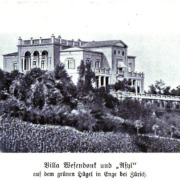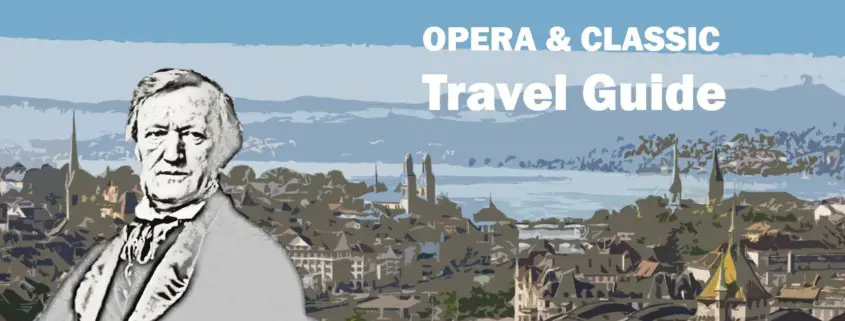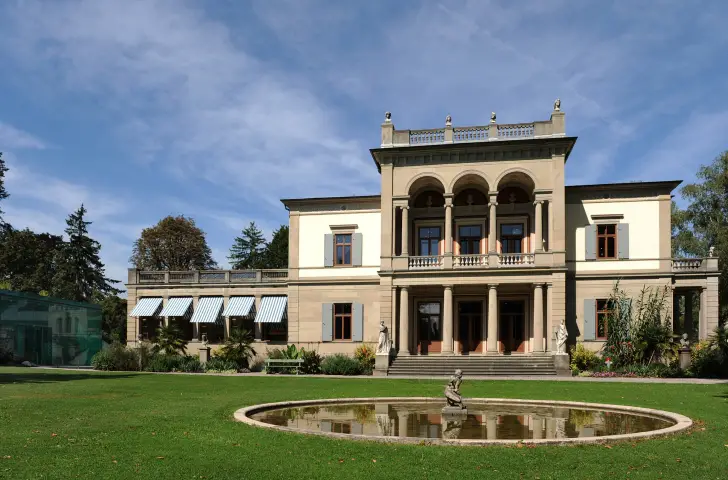Richard Wagner Museum Rietberg and Hotel Baur au lac
The series about historical places of opera art. Get to know exciting excursion and travel ideas for opera lovers. This time: the Richard Wagner Museum in Zurich near Lucerne (Switzerland)
All Destinations on google maps with links to detailed Blogposts:
Richard Wagner in Zurich

Wagner had to flee headlong from revolutionary Dresden to Switzerland with his wife Minna. His Zurich exile lasted from 1849-1859, where he befriended the German industrialist couple Wesendonck, who became his patrons. His stormy love for the patron’s wife Mathilde Wesendonck inspired him to write his great love opera “Tristan und Isolde“.
LINK TO THE COMPLETE WAGNER BIOGRAPHY
Destination Villa Wesendonck / Museum Rietberg
In 1857, Wagner moved into an annex (the “Asylum”) of the Villa Wesendonck in the Enge quarter of the city of Zurich. This building is now a museum for non-European culture and can be visited; the asylum no longer stands.
Villa Wesendonck (today Museum Rietberg):
Destination Hotel Baur au lac
In this first-class hotel, Richard Wagner read for the first time to his Swiss friends from the epic “The Ring of the Nibelung”. He read the entire Ring on four evenings in the ballroom “Le petit palais”. Later, he also performed the first act of Die Walküre in concert.
Baur au lac 1910:
Musical background: “Tristan und Isolde”
Wagner was inspired to write the love opera “Tristan und Isolde” by his extramarital relationship with Mathilde Wesendonck, who entered his life in 1852. He met the 24-year-old in his exile in Zurich. The story that followed is well known: her husband Otto became his Zurich patron, and Wagner began a secret relationship with Mathilde, who lived in close proximity (which Wagner always claimed in later years was platonic). In 1854, the 41-year-old Wagner wrote to Liszt that “until now he had never enjoyed the real happiness of love and he now wanted to set up a monument to her.” The plot of “Tristan and Isolde” is significant: Tristan (Wagner) and Isolde (Mathilde) cannot come together on earth because of Isolde’s marriage to King Marke (Otto). Wagner uses part of his motifs for the second act from “Träume,” the fifth of her Wesendonck songs, which he based on poems by the gifted literary woman.
Link to the online opera portrait of Tristan und Isolode:
TRISTAN UND ISOLDE by Wagner – opera guide and synopsis (opera-inside.com)






Leave a Reply
Want to join the discussion?Feel free to contribute!